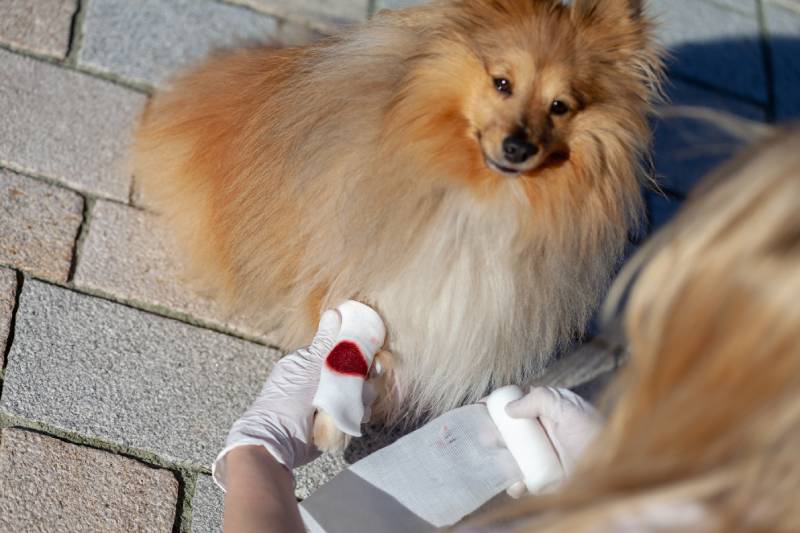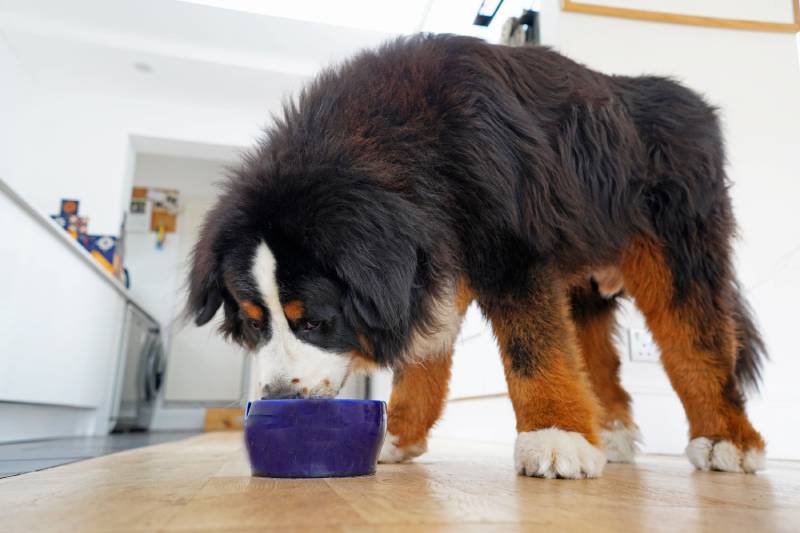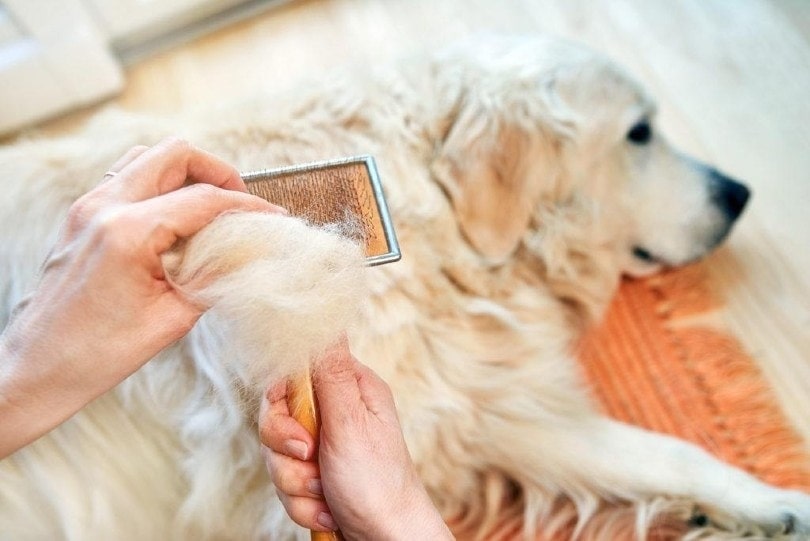Living With a Dog with Dementia: Vet-Reviewed Care Guide & FAQ

Updated on

Click to Skip Ahead
As our dogs age, we expect them to slow down, sleep more, maybe get some gray hairs around their muzzle.
It can come as a surprise to some owners that their dogs can experience disorientation, memory loss, and cognitive decline, just like humans with dementia or Alzheimer’s. Unfortunately, it’s not just a side effect of aging—it’s actually canine dementia or canine cognitive dysfunction (CCD).
This condition is progressive and has no cure, but there are ways to recognize the signs and help your pet manage during this difficult time.
Understanding Canine Cognitive Dysfunction
According to the Journal of Veterinary Behavior, dogs with CCD show similar pathological changes as humans with Alzheimer’s and dementia1. However, unlike these conditions, CCD still isn’t well researched or understood by comparison. There have been shown to be protein deposits in the brain and it’s blood vessels that correlate with severity of disease. Oxidative damage is also associated with cognitive decline.
Because dogs can’t speak, many owners attribute their behavioral changes to normal aging and miss the early warning signs of CCD until it’s severe. They don’t mention these problems to their vet, leading CCD to be overlooked during routine visits.
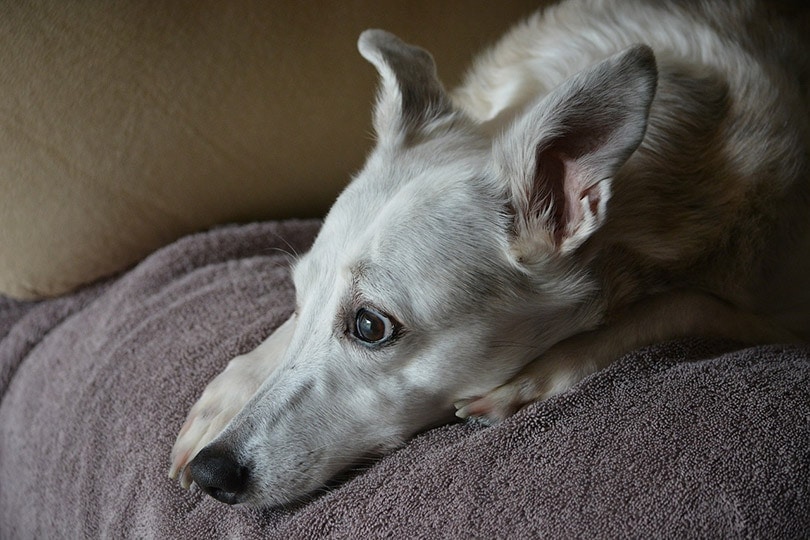
Signs of CCD
Dementia in dogs is typically diagnosed based on the DISH acronym (Disorientation, Interaction, Sleep and Activity, Housetraining). Some of these signs can mimic other conditions, so it’s a diagnosis of exclusion, meaning it’s reached by investigating and eliminating other potential causes. Checklists are available to help keep note of symptoms.
Disorientation
- Pacing
- Aimless wandering
- Getting “stuck” in different parts of the house, such as behind furniture or on the other side of a door
- Getting lost in the backyard
- Failing to recognize familiar people or pets
- Reduce responsiveness to verbal commands
Interaction
- Reduced enthusiasm for attention
- Seeking less attention, such as petting or playtime
- Less interest in greeting family members
Sleep and Activity
- Sleeps more during the day
- Poor or disrupted sleep at night
- Lack of interest in surroundings or activity
- Restlessness or pacing at night
- Increased vocalization at night
Housetraining
- Frequent indoor accidents
- Accidents after being let outside
- Failure to indicate the need to go outside
Remember, some of these signs and symptoms can be caused by other medical conditions, such as vision or hearing loss and arthritis. Medical conditions like diabetes and Cushing’s disease can lead to urinary incontinence as well. It’s important to have a full workup that includes a physical exam, urinalysis, blood tests, and other tests to rule out possible health problems and make a definitive CCD diagnosis.
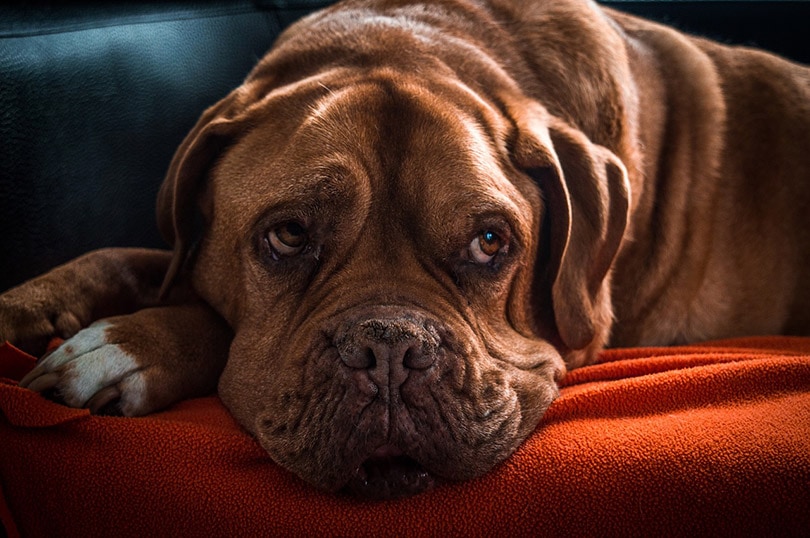
Caring for a Dog with Dementia
Dementia does require some lifestyle changes and interventions to keep your pup happy and comfortable.
Develop a Routine
Dogs appreciate structure and routine at any age, but it’s vital for a dog with dementia. These dogs benefit from a predictable routine for feeding, outdoor time, and bedtime, which can reduce feelings of confusion and stress.
Having a strict schedule may not always be possible but do your best to provide a consistent routine for these activities to help your dog manage.

Avoid Changing the Layout
It’s common for dogs with CCD to get lost in the house more easily. Owners may find their dogs unable to get out from behind furniture or an open door. While pacing, dogs have reduced awareness of their environment and may stumble over clutter left on the floor.
Do your best to keep your house tidy and keep the furniture in the same place, especially your dog’s food and water bowls and bed. If you change the layout unexpectedly, it can increase your dog’s confusion and lead to stress. You should also avoid leaving clutter on the floor, such as shoes or toys, that your dog can trip on.
Prepare for House Training Accidents
Dogs with dementia may experience lapses in their house training or full urinary or bowel incontinence. A housebroken dog isn’t happy to have accidents, and this can be upsetting to them, not to mention stressful and frustrating for you.
Take your dog out for more frequent toilet breaks but remember that they may not remember why they’re outside. Give them time to wander and see if they’ll relieve themselves. Remember, your dog likely won’t alert you that it needs to go outside, so plan a schedule for first thing in the morning, after meals, and before bed.
It’s possible that you’ll spend time outside with your dog, only to have it come in and immediately pee or poop on the floor. Don’t get angry or scold your dog, as the situation is out of its control and will only be upsetting.
Finally, you can invest in a waterproof or washable dog bed to help with accidents and keep your dog in an area of the house with hard floors. Another option is mattress protectors designed for incontinent humans. These are often large enough to suit any breed size, cheap, and washable, so you can rotate them out as needed. Dog diapers are available but if incontinence problems necessitate their use, then speak with your veterinarian so you know how to care for your dog and avoid further problems such as urine scald.
Take Safety Precautions
Dogs with dementia often struggle to find their way around the house, get stuck beneath and behind furniture, and stumble over objects. This can be dangerous if your dog falls off of steps or gets behind furniture that can be knocked over. In a yard, a dog could fall off a porch or deck, into a pond or pool, or wander off, increasing the potential danger.
It’s vital to take safety precautions to keep your dog safe. Invest in a large cage or playpen to keep your dog confined while you can’t supervise or dedicate a small room to your dog and remove any potential hazards. Your dog should never be left outside unsupervised, even in your own yard, and be sure to keep identification tags on its collar.
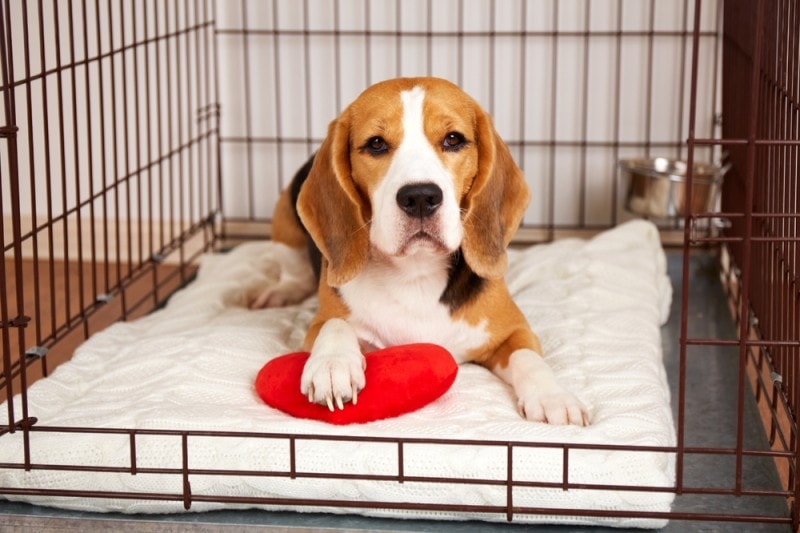
Devote Time to Physical and Mental Stimulation
Both physical and mental stimulation are important for your dog, especially in the early stages of cognitive decline. Keep up with regular, short walks and sniffari’s and follow your dog’s lead. The new sights, smells, and activity outside can be overwhelming, so be sure to take your time and reassure your dog that it’s safe.
For mental stimulation, try simple puzzle toys that get your dog’s brain working. Avoid any puzzle toys that are too complicated, as it could create more frustration and stress. Keep games short and straightforward to avoid frustrating your dog. Rotate toys so there is something of interest each day.
Re-inforce training of commands such as “stand” and “look” instead of “sit” and “down” which can be hard for dogs with mobility problems.
Be Patient and Adapt
Dog dementia can be upsetting, time-consuming, and frustrating to manage, especially as the symptoms get more severe. Remember to be patient and understanding, however. None of this is your dog’s fault, and they’re likely just as stressed out as you are. Do your best to address the issues as they arise and be ready to adapt as conditions change.
Get Regular Vet Checkups
Dogs can experience a variety of health problems as they age, with or without dementia. Regular vet checkups are important for not only monitoring your dog’s mental condition but for identifying any other health problems that may occur like diabetes, kidney disease, or vision loss. Keep notes of changes in your dog’s behavior and physical symptoms and discuss them with your vet.
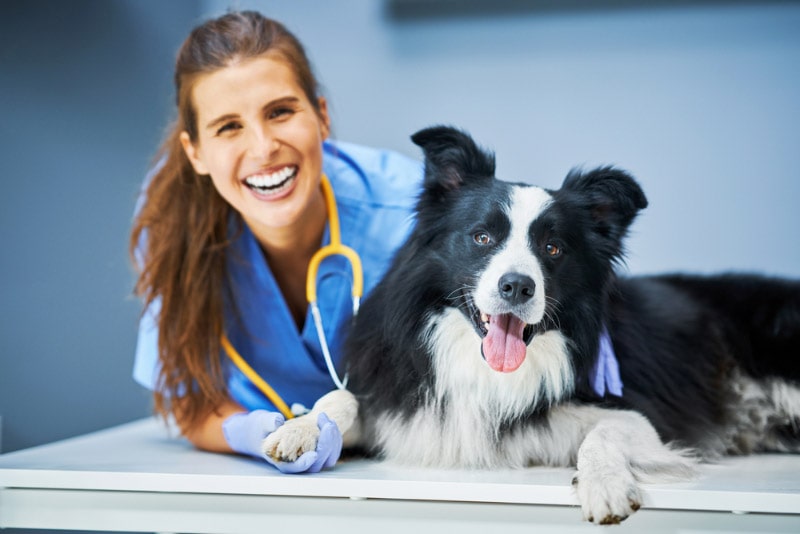
Frequently Asked Questions
How is dog dementia diagnosed?
Dog dementia is diagnosed by exclusion. Many symptoms of CCD can be seen with other health conditions, so vets typically rule out other conditions until only CCD is left. If you suspect your dog has dementia, it’s vital to see a vet. MRIs can be used to make a final diagnosis, but it may be cost-prohibitive.
What causes dog dementia?
The cause of dementia in dogs isn’t known at this time, but it is a common part of the aging process. It results in several progressive degenerative changes to the brain tissue and it’s blood vessels.
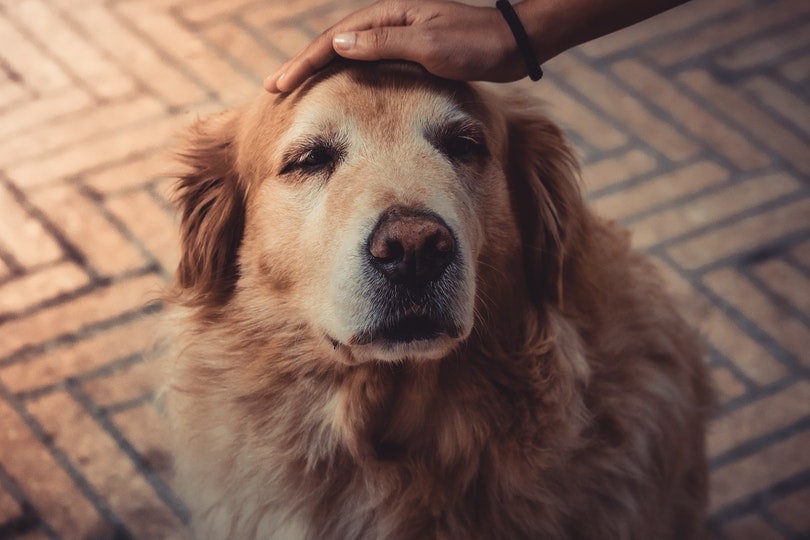
Can dog dementia be prevented?
Because the starting cause is unknown, it’s unclear whether dementia can be prevented. There are correlations between breed, size, age, sexual status, and activity level, however. One study indicated that dogs with high activity levels are at a reduced risk of developing dementia.
Can dog dementia be cured?
Like dementia and neurodegenerative diseases in humans, there’s no known cure for CCD at this time. Cognitive function progressively deteriorates, and there’s no way to regenerate or reverse this loss. Research is currently looking for potential treatments and cures, however. There are many supportive medications, foods and supplements that have been shown to have beneficial effects, be sure to discuss these with your veterinarian.
What should I do if I think my dog has dementia?
If you suspect your dog has dementia or you see significant behavioral changes, it’s important to schedule a checkup with your vet. It could be dementia or another medical condition, possibly treatable, and your vet will conduct tests to determine the cause of the changes and discuss options with you.
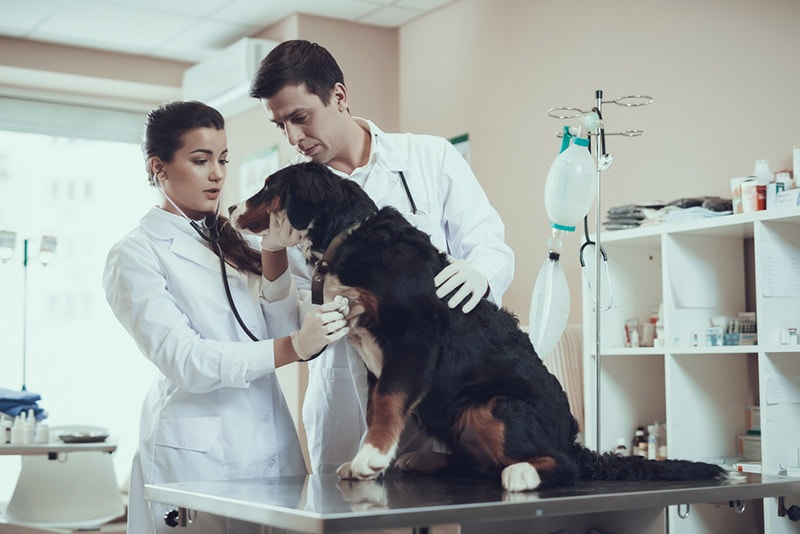
What is the outlook for dogs with dementia?
The aging process affects everyone, and as our pets receive better care and live longer, they’re likely to show more age-related illnesses and conditions like CCD. While it can be upsetting to see your once-lively pup decline in this way, you have options to keep your pet comfortable and happy for the remainder of its life.
Should I euthanize?
The decision to euthanize your dog is always difficult. Depending on the severity of your dog’s condition, you can manage symptoms and improve their quality of life with interventions and medications, such as household changes and medications. Your vet can help you provide palliative care and keep your pup comfortable as long as possible.
Your dog’s quality of life can take a turn for the worse quickly, however. If your dog’s confusion and anxiety aren’t managed and it’s struggling with feelings of fear for significant portions of the day, unable to sleep comfortably, injuring itself despite safety precautions, or no longer enjoying play, food, or bonding time, that’s not much of a life at all.
Ultimately, the decision to euthanize is deeply personal. Consider your dog’s quality of life and dignity and your stress level, and consult with your vet. Although difficult, this decision is a final act of kindness.
Conclusion
It can be incredibly distressing to learn that your lifelong companion is suffering from dementia, but that doesn’t mean you can’t take control of the situation to ensure your dog enjoys the best quality of life possible.
Examples include, as we’ve discussed in this post, sticking to a routine, avoiding rearranging your house, dog-proofing your home for safety, and doing mentally and physically stimulating activities with your pooch.
The most important thing is to reduce your dog’s stress as much as possible and provide all those familiar home comforts that give them a sense of security. Remember that your vet is on hand to support you and offer advice through this difficult time.
Featured Image Credit: Pezibear, Pixabay





